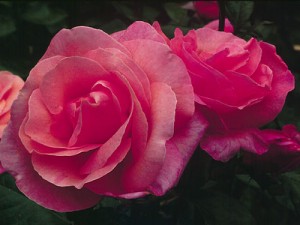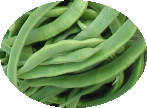Part Two By Michael D. Barwise
In my last article I discussed the election of old fashioned roses for use as a crop. So what can be made from them? We all know of rose hip syrup. However the old fashioned roses are very variable in their production of hips. The best source of rose hips remains the wild dog rose (Rosa canina) in the hedgerow. The redhipped rugosas also yield a good syrup, and make good hedging as they can be clipped hard with impunity once the hips are ripe.
Where the old fashioned roses are unsurpassed is in the perfume of their flowers. There are many recipes from the 17th and 18th centuries, although they frequently refer to rose petals as “rose leaves”, causing much confusion.

The flowers must be collected on a dry day just as they are fully open. Whole flowers should be cut and carefully laid in a basket to avoid crushing. Once in the kitchen, the petals are pulled away from the receptacle by hand. Any petals that are damaged or have brown patches must be discarded. If you are making foodstuffs, the small thickened white base must be snipped off each petal, as it is bitter and spoils the flavour. The petals must then be used immediately, otherwise they will start to decay. However, if you are making cosmetics, this process is not necessary, as it does not affect the perfume.
For cordials, syrups and wines, the prepared petals are infused in hot water. They must not be boiled: a temperature of about 60C is ideal. A double boiler or bain marie with a thermostat is best, but a stock pot with a lid, suspended inside a larger one filled with water can serve as a makeshift double boiler. The petals from a dozen double or about sixty single roses are infused overnight in one litre of water. Three consecutive batches (about a thousand rose petals altogether) should be infused in the same liquid to obtain the required strength of flavour. A teaspoonful of fresh lemon juice should be then added per litre to stabilise the infusion, which can be kept deep frozen in a closed polythene container for up to a year. Sugar (or honey) is added to make the recipe of your choice, and the amount will depend on the intended use (syrup, cordial or wine).
For a rare treat, try rose petal conserve. Take a clean sterile jam jar, put in a thin layer of white sugar, followed by a layer of prepared rose petals, another layer of sugar, more petals, and so on, pressing down gently, until the jar is full. Store it in a cool dark place for a year, then empty into a blender. Blend well, repack the jar, heat it very briefly to 80C in a water bath with the lid loose. Seal it immediately, and put the jar back in the dark. This ruby red fragrant confection will be ready in about another year, and it keeps for ever. I still have a small quantity that was made in 1964. It has turned the colour of Branston pickle, but is still strongly redolent of roses.
For simple cosmetics (creams and soaps), rose petals are crushed in a mortar and mixed into warm lanolin at the rate of one kilo of rose petals per kilo of lanolin. The mixture is put in jars and stored in a cool dark place for about six months. After this, if a clear (petal-free) cosmetic is required, the lanolin is gently melted and poured through a nylon sieve into a new container. The rose scented lanolin can be used as a base for many home made cosmetics. If you do not like (or cannot get) lanolin, you can use purified salt-free lard.
So there we are. I have only given a very brief outline here of the possibilities, but I hope I have shown that the old fashioned roses have more to offer than just as garden ornaments. Investigate. Experiment. Enjoy.



